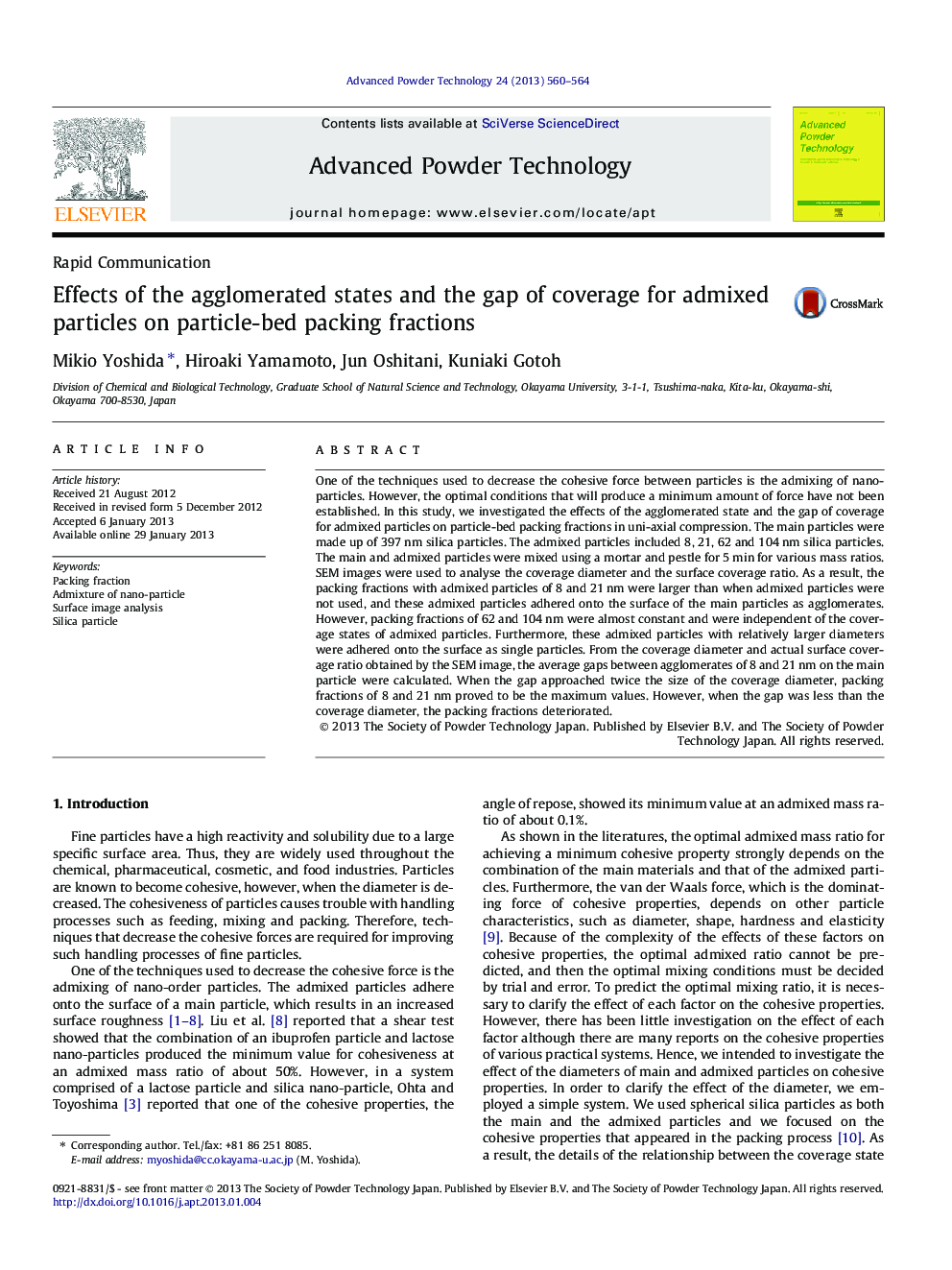| Article ID | Journal | Published Year | Pages | File Type |
|---|---|---|---|---|
| 144005 | Advanced Powder Technology | 2013 | 5 Pages |
One of the techniques used to decrease the cohesive force between particles is the admixing of nano-particles. However, the optimal conditions that will produce a minimum amount of force have not been established. In this study, we investigated the effects of the agglomerated state and the gap of coverage for admixed particles on particle-bed packing fractions in uni-axial compression. The main particles were made up of 397 nm silica particles. The admixed particles included 8, 21, 62 and 104 nm silica particles. The main and admixed particles were mixed using a mortar and pestle for 5 min for various mass ratios. SEM images were used to analyse the coverage diameter and the surface coverage ratio. As a result, the packing fractions with admixed particles of 8 and 21 nm were larger than when admixed particles were not used, and these admixed particles adhered onto the surface of the main particles as agglomerates. However, packing fractions of 62 and 104 nm were almost constant and were independent of the coverage states of admixed particles. Furthermore, these admixed particles with relatively larger diameters were adhered onto the surface as single particles. From the coverage diameter and actual surface coverage ratio obtained by the SEM image, the average gaps between agglomerates of 8 and 21 nm on the main particle were calculated. When the gap approached twice the size of the coverage diameter, packing fractions of 8 and 21 nm proved to be the maximum values. However, when the gap was less than the coverage diameter, the packing fractions deteriorated.
Graphical abstractModel of coverage states of admixed particles for the calculation of average gap Gpp.Figure optionsDownload full-size imageDownload as PowerPoint slideHighlights► Packing fractions with admixed particles of 8 and 21 nm diameters increased. ► Admixed particles of 8 and 21 nm adhered onto the main particles as agglomerates. ► The gap of coverage for admixed particles is an important for packing fractions.
